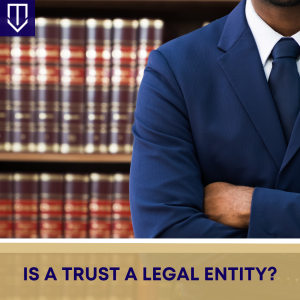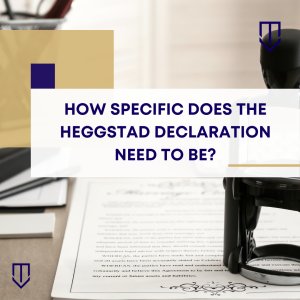 “A trust is any arrangement which exists whereby property is transferred with an intention that it be held and administered by the transferee for the benefit of another.” (Higgins v. Higgins (2017) 11 Cal.App.5th 648, 662.) Essentially, a trust is a legal relationship that allows a person to hold property for the benefit of another person.
“A trust is any arrangement which exists whereby property is transferred with an intention that it be held and administered by the transferee for the benefit of another.” (Higgins v. Higgins (2017) 11 Cal.App.5th 648, 662.) Essentially, a trust is a legal relationship that allows a person to hold property for the benefit of another person.
In a trust relationship, there are typically three main people involved: (1) the settlor; (2) the trustee; and (3) the beneficiary. The settlor is the person that creates the trust and transfers the property he/she owns in the trust to be held by the trustee. The trustee is the person that administers the trust. The trustee holds legal title to the property transferred into the trust by the settlor and acts as a fiduciary to the beneficiary to protect the assets in the trust. The beneficiary holds equitable title to the trust property and is the person that benefits from the property in the trust. In some cases, the settlor and the trustee are the same person.
In sum, a trust is a fiduciary relationship where property is transferred by one person to another on behalf of a third party. At the Underwood Law Firm, our attorneys are more than familiar with trusts and the requirements that follow.
 California Partition Law Blog
California Partition Law Blog


 Anytime a litigant wants to file a lawsuit, a threshold question is where the lawsuit should be filed. Specifically, the question is what county should get to hear the action. This process is called determining “venue,” and it can become quite a complicated endeavor. This is because the “correct” county for action will depend on a number of factors.
Anytime a litigant wants to file a lawsuit, a threshold question is where the lawsuit should be filed. Specifically, the question is what county should get to hear the action. This process is called determining “venue,” and it can become quite a complicated endeavor. This is because the “correct” county for action will depend on a number of factors.  A Heggstad petition is a unique legal maneuver in probate court that a party can use to establish the existence of a trust. Normally, if a party wants to show that the property at issue is in a family trust, they have to produce evidence of a transfer of the property into the trust. (Prob. Code § 15200 (b).) This is usually accomplished with a deed, which conveys the property from the owners (the “settlors”) to the trustees of the trust.
A Heggstad petition is a unique legal maneuver in probate court that a party can use to establish the existence of a trust. Normally, if a party wants to show that the property at issue is in a family trust, they have to produce evidence of a transfer of the property into the trust. (Prob. Code § 15200 (b).) This is usually accomplished with a deed, which conveys the property from the owners (the “settlors”) to the trustees of the trust.